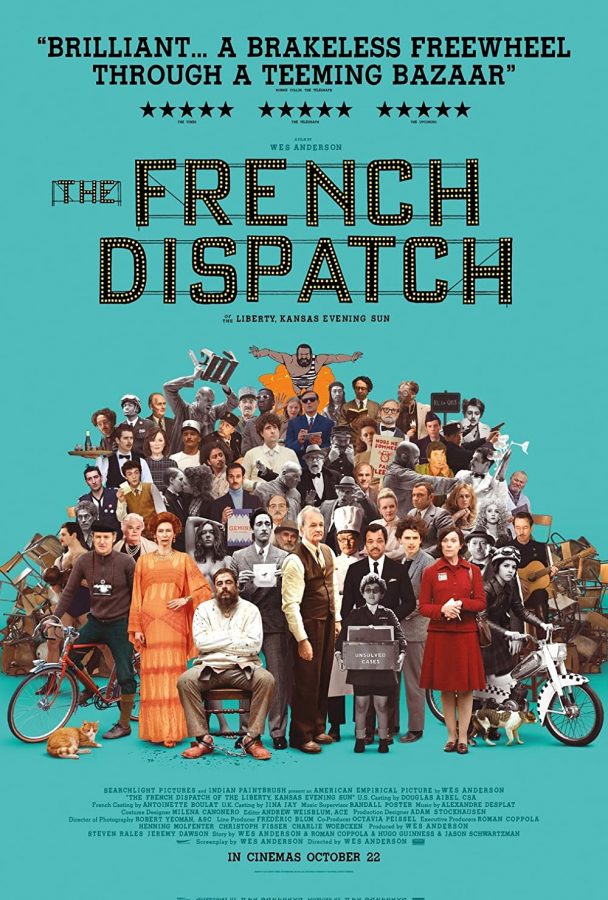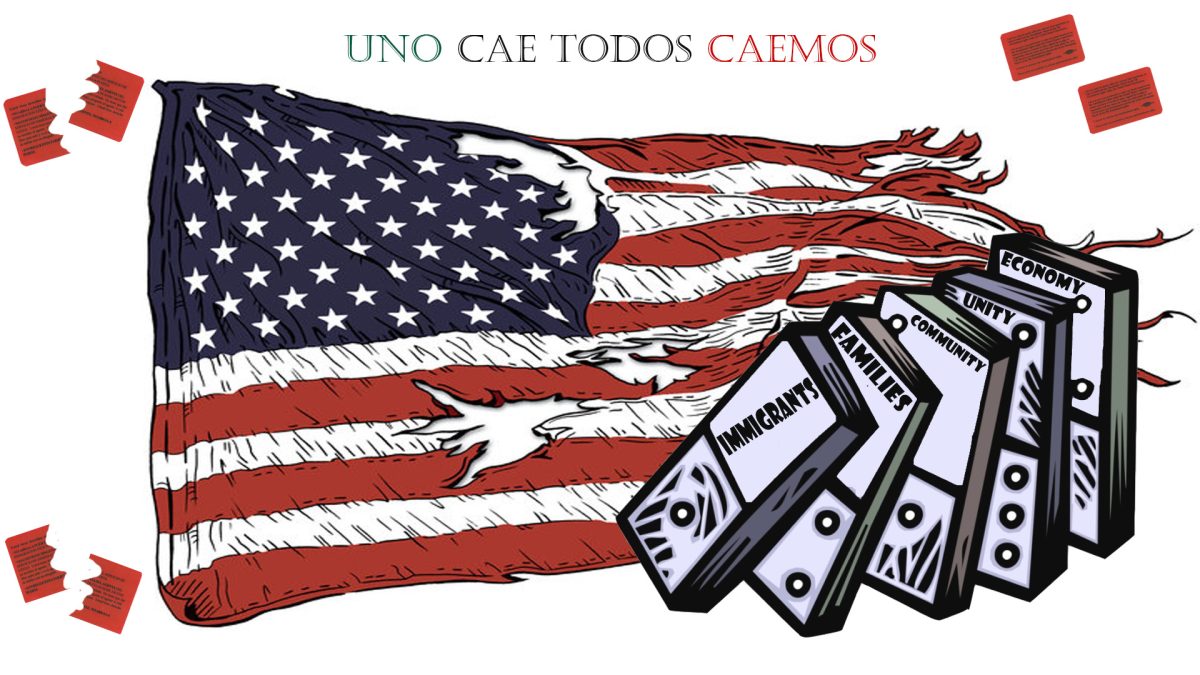Dispatch from France: Wes Anderson’s 10th film is an ode to 1970s print journalism
Wes Anderson’s admiration for The New Yorker inspired the story of his 10th film, “The French Dispatch.”
October 28, 2021
Quite literally hot off the presses from its triumphant debut at the Cannes Film Festival earlier this year, Wes Anderson’s 10th film “The French Dispatch” has finally been released in select theaters and will spread worldwide this Friday. With a successful opening weekend and elated responses from audiences and critics alike, the film is shaping to be yet another hit from the acclaimed director. But are his whimsical quirks and melancholy stories starting to get a little old? Or is this his true magnum opus?
Filled with Anderson’s signature pastel-ridden storybook aesthetic, the film is an ode to print journalism of the 1970s and takes apparent inspiration from The New Yorker.
In the film, we follow a group of writers and editors part of an American outpost based in the fictional town of Ennui, France, where the team is in the midst of writing the titular newspaper’s final issue. The film chronicles the three greatest stories from the newspaper over the course of its livelihood in an organized format: The story of an imprisoned maniac finding solace in the art of painting, a divided population of rebellious youth fighting for childishly significant rights, and a TV newscaster detailing a sacred dinner he had with a prestigious political figure one night in the French town. It’s an overwhelmingly impactful mirage of storylines, cramped into the confides of every corner of the plot and frame.
The film is sprawling with a delightful ensemble helped even more by the fact that every single cast member brings their A-game. Of course in such a massive ensemble, there are bound to be some stand-out performances. Jeffery Wright, Frances McDormand, Benicio del Toro, Lyna Khoudri, Stephen Park and Alex Lawther (just to name a few) are some of the best actors in the film.
Every aspect of the filmmaking is top-notch and peak Anderson: the production design and oh-so familiar symmetrical cinematography make the film a beauty to behold and easily one of the most beautiful films of the year from a visual standpoint. The writing is brilliantly witty, if not a little charmingly pretentious. The format the three stories are contained in make for a grounded visualization of this epic, labyrinthic tale. Speaking of grounded – it’s the performances from said highlight actors that add a sense of formality (almost always present in one of his films), and none of the other cast members white cement that achievement quite like Bill Murray as the chief editor of the newspaper.
There’s almost too much to witness and analyze in “The French Dispatch” but that’s not to say it isn’t worth enjoying on the surface level. Just note, it is not a genre film by any means and its colorfully yet dreary tone and French-cinema influence may not cater to modern audiences. It did warrant a second watch for me (which I was not opposed to at all) and I found myself loving it even more than I did the first time around. I hope you can too.
I heavily recommend viewing “The French Dispatch” in theaters, preferably if you are a fan of the director’s previous films (“The Grand Budapest Hotel” and “Fantastic Mr. Fox”) or if you’re interested in the relentless narrative and passion it has to offer.







